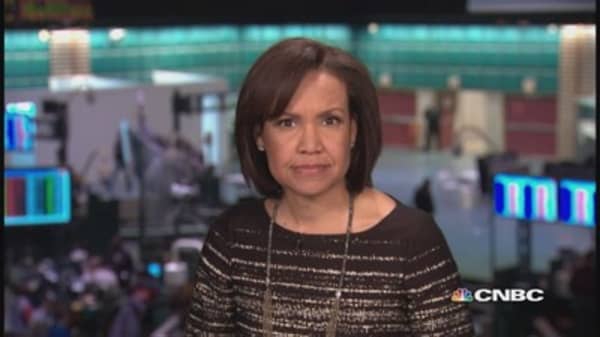As drivers have witnessed, gasoline prices took another steep plunge—down 24 percent last month. The average cost of a gallon of regular has dropped below $2 in many parts of the country. Other fuels—including heating oil, diesel and propane—also fell.
But the energy windfall spread through the prices of other products, including food. Services prices fell two-tenths of a percent.
The result was a drop of two-tenths in the so-called core rate of producer inflation, which excludes volatile food and energy costs to provide a better read on underlying price pressures. Since last January, the core index was up 1.6 percent. With food and energy taken into account, the index didn't budge.
Most forecasters see the price weakness as a temporary byproduct of the plunge in oil prices. If energy prices stabilize at current, lower levels, the downward pressure on inflation will ease. In the short term, though, the downward pressure on prices will linger as lower energy costs spread through the economy.
"Most of that should be over with by midyear unless oil sags again," said Montgomery. "This is not general deflation in a classical sense."
Read More US wholesale prices drop 0.8 percent in January
Weak prices in other economies—especially Europe and Japan—come as those regions struggle to revive growth. That's sparked concerns about a more persistent price weakness that could make it harder for those economies to regain strength.
But the outlook in the U.S. is considerably stronger.
Solid job gains that began last year are driving down the jobless rate and are putting upward pressure on wages. That added spending power—combined with some savings from lower energy prices—is expected to boost consumer demand, which accounts for some two-thirds of the U.S. economy. Higher employment levels are also expected to help boost the housing market, which has yet to stage a convincing recovery in many parts of the country.








